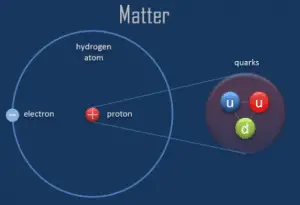An electron is one of the fundamental particles that make up matter. All matter except dark matter is made of molecules, which are themselves made of atoms. The atoms consist of two parts. An atomic nucleus and an electron cloud. The electrons are spinning around the atomic nucleus. Electrons belong to the group of elementary particles known as leptons. Leptons are elementary, half-integer spin (spin 1⁄2) particles that do not undergo strong interactions. They are subject to the Pauli exclusion principle. This fact has key implications for building up the periodic table of elements.
The electrons are negatively charged (-1e), almost massless particles that nevertheless account for most of the size of the atom. Their rest mass equals 9.109 × 10−31 kg (510.998 keV/c2) (approximately 1/1836 that of the proton). Electrons were discovered by Sir John Joseph Thomson in 1897. Electrons are located in an electron cloud, which is the area surrounding the nucleus of the atom. The electron is only one member of a class of elementary particles which forms an atom.
Like all elementary particles, electrons exhibit properties of both particles and waves: they can collide with other particles and can be diffracted like light. The wave properties of electrons are easier to observe with experiments than those of other particles like neutrons and protons because electrons have a lower mass and hence a longer de Broglie wavelength for a given energy.
